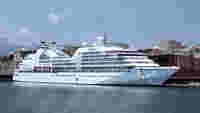I/O System for Exhaust Gas Cleaning aboard Ships

International shipping primarily uses fuels that have problematic emissions, like high levels of soot, nitrogen oxides and sulfur oxide. This contaminates the air, primarily in coastal areas and in harbor cities, more than is permitted. In the past few years, numerous regulations on emissions from ships have been enacted, affecting sulfur oxides (SOx), nitrogen oxides (NOx), ozone depleting agents (including CFCs), incineration of garbage and trash on board, energy efficiency (EEDI) and the introduction of “Emission Control Areas” (ECAs).
Propulsion Control – Here’s How WAGO Supports You:
The WAGO-I/O-SYSTEM 750 XTR is temperature-resistant from −40 °C to +70 °C
Vibration-proof up to 5g
Immunity to impulse voltages as per EN 60870-2-1
